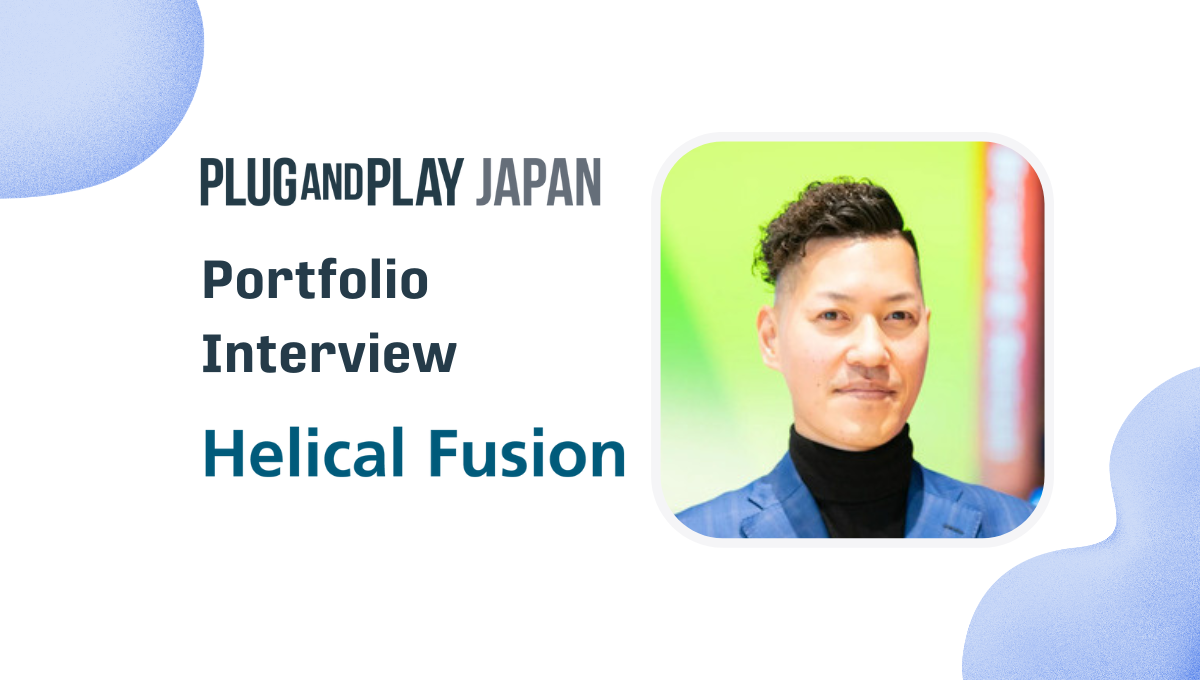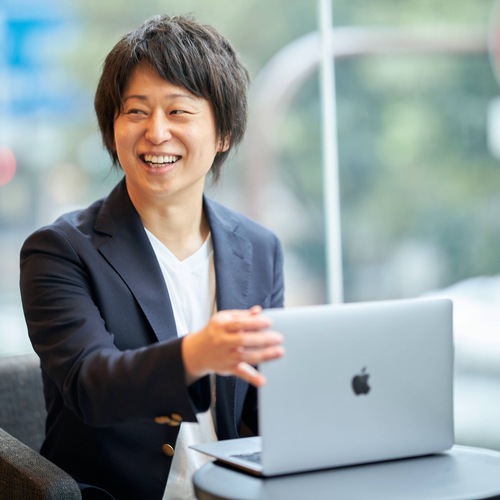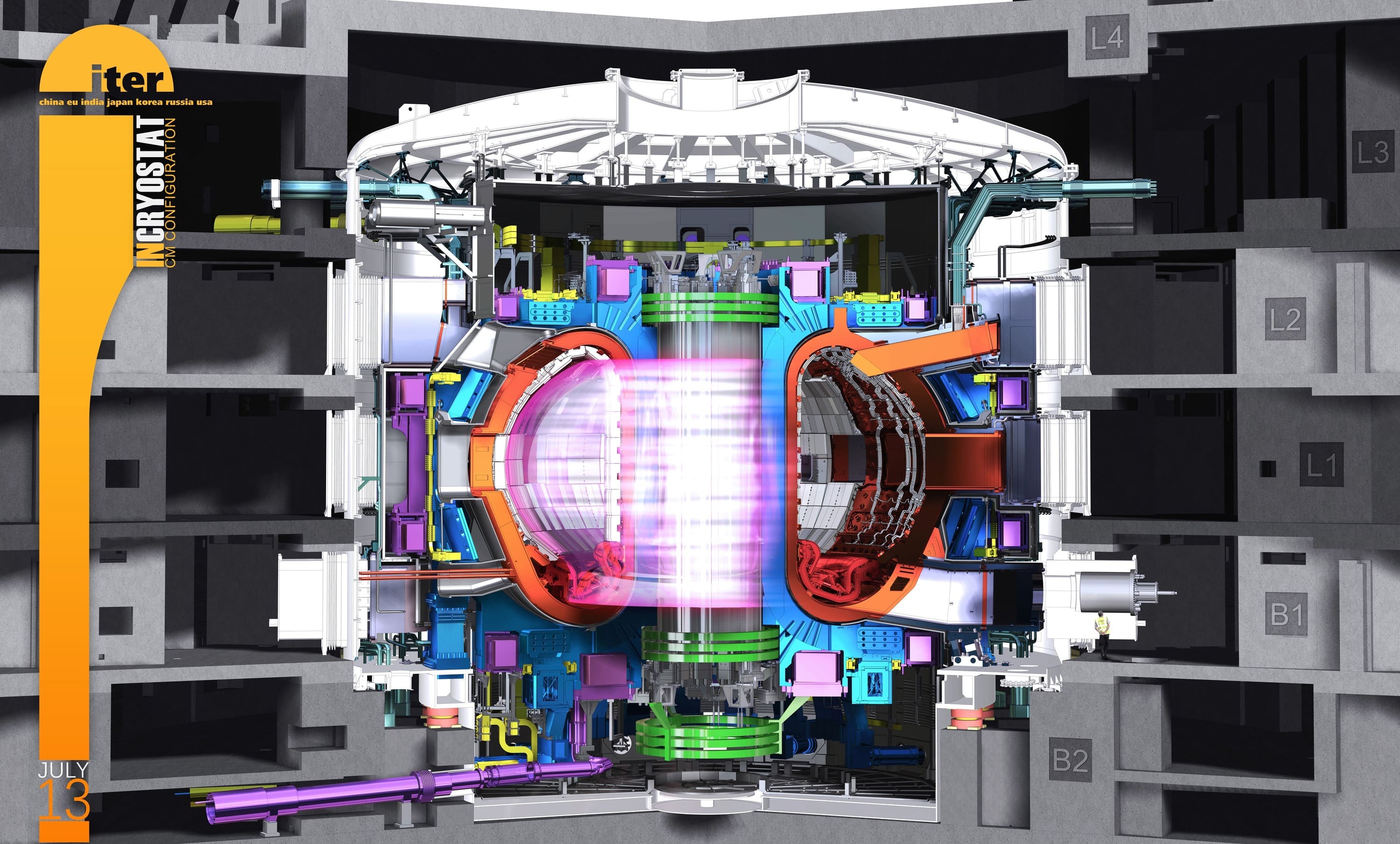The Road to Commercialize the World's First Fusion Energy Reactor - Helical Fusion Co., Ltd.
2023/02/13

Helical Fusion is one of the very few startups in the world striving to develop commercial nuclear fusion reactors. Plug and Play Japan invested in the company in May 2022 as we support their mission to “realize a sustainable world with fusion energy”. In this interview, we spoke to CEO Mr. Taguchi who is aiming to solve global energy problems about the advantages of nuclear fusion power generation.
Writer: Plug and Play Communications Associate Midori Abe
Helical Fusion Co., Ltd.
- Profile
- The Development of the World's First Commercial Fusion Reactor
- Safe and Environmentally Friendly Energy
- Road to Develop and Finance the Technology on A Global Level
- ーー Are there any industries or forms of collaboration in which you would like to make new contacts?
- Contributing to World Peace by Creating An Energy-Sufficient World
Profile

- Interviewee: Takaya Taguchi CEO, Helical Fusion Co., Ltd.
After working for Mizuho Bank, Bank of Japan for International Cooperation, PwC Advisory, Dai-ichi Life Insurance, and as COO for a startup, Taguchi co-founded Helical Fusion in 2021. He holds a B.A. in Ethics from the Graduate School of Letters, Kyoto University, and an M.A. in Literature from Kyoto University.

- Interviewer: Harunori Oiwa, Plug and Play Senior Ventures Associate
Harunori Oiwa majored in Pharmaceutical Sciences at the Osaka University Graduate School and global business at the University of Washington. After working in new drug development, a consulting firm in Silicon Valley, and a biotech startup, he joined Plug and Play, where he was responsible for investments in the Health and DeepTech areas.
The Development of the World's First Commercial Fusion Reactor
ーーStarting with the basic questions, how did you start the business?
It started about two or three years ago. I heard from my acquaintance that some fusion researchers were planning to form a company but could not progress the project due to their lack of talent for business development, so I decided to help them. As I started to study fusion technology, I realized how fascinating it was. It made me believe that fusion technology was the necessary tool to tackle the challenges humanity and the planet are facing, and I became determined to commit to this field. Fortunately, the researchers were eager to collaborate with someone who has experience in business, allowing me to co-found the company in October 2021.
ーー Can you give us an overview of your business?
Our top priority is to be a pioneer in commercializing fusion reactors, which nobody on earth has yet to achieve. To make this happen, we have two ongoing projects: the first is to design a commercial fusion reactor, and the second is to develop the reactor’s core technologies. Only a few researchers in the world can design an entire blueprint of fusion reactors, but our founding members have the exceptional capability to do so. The next step is to develop the core technologies. After developing the core technology to a certain point, we would like to spread and provide the technology and know-how to other players who need it.
ーー Let me ask you a little more about fusion technology. What are the characteristics of the 'helical type' fusion reactor?
The main feature of a helical-type reactor is its ability to operate the reactor continuously for a long-term. Other methods have a potential to generate fusion instantaneously. However, looking at the results of numerous experiments to date, only the helical type is currently considered to have enough capability to operate a long-term reactor from six months to a year in the future. For this reason, we have adopted the helical type as the most suitable structure for a power generation infrastructure.
ーー What are the functions of Helical Fusion's core technologies, such as plasma, superconducting magnets, blankets, and diverters?
It is said that four main technologies are required in order to develop a fusion reactor.
Firstly, concerning the generation and control of plasma (hydrogen gas at an ultra-high temperature), our company possesses a spin-off knowledge of plasma-related technologies developed over 20 years at the National Institute for Fusion Science (NIFS). Our company’s underlying strength is undoubtedly exceptional insights and expertise in plasma generation and control methods.
‘Blanket Technology’ is a method used to capture the released neutrons during a fusion reaction and convert them into heat energy. Usually, solid metal (e.g., Granular lithium) is used for blankets, but the current technology significantly lacks efficiency while facing maintenance issues. Our company aims to develop a liquid-based blanket to solve these obstacles.
A superconducting magnet is a device that utilizes electromagnetic technology to generate a powerful magnetic field to confine the hydrogen plasma. Superconducting technology is a crucial factor to develop a strong magnetic field. Electrical resistance prevents a large current flow when coils are made from ordinary copper wire. Thus, the utilization of superconducting technology which creates a state of zero electrical resistance is essential when creating magnetic fields.
The commonly used technology is low-temperature superconductivity (-269°C), but there are challenges in commercializing. Although the current can flow easily in this method, it is extensive and costly and limits the space to install the blanket.
Helical Fusion is trying to complete the development of coils using a new technology called high-temperature superconductivity. Although the required temperature is -250°C (despite its name), it can be cooled with liquid hydrogen or gaseous helium instead of liquid helium, reducing the size of its installment. Creating high-temperature superconducting magnets is vital in successfully developing fusion technology. We have experts in this field who are working hard to develop them as speedy as possible.
Finally, there is the divertor. The plasma of more than 100 million degrees Celsius floats in the vacuum space of the fusion reactor. If the plasma concentrates on a specific area, that area will melt due to the intense heat. Therefore, a special material with high heat resistance must be utilized as a diverter. If a liquid blanket can be developed, it may also function as a diverter. Therefore, for the time being, we plan to focus on developing high-temperature superconducting magnets and liquid blankets.

(Image photo of a Nuclear Fusion Reactor)
Image Source:https://www.iter.org/
Safe and Environmentally Friendly Energy
ーー It is said that the most notable features of nuclear fusion are safety and low environmental impact. Can you elaborate on this aspect?
Nuclear fusion has two main features that are completely different from fission, which is used in conventional nuclear power plants.
The first point is that fusion reactors do not have a risk of meltdown. In the case of nuclear fission, the insertion of uranium substances in the water causes fission and transforms into another atom on its own. Nuclear fission uses the heat energy produced in this process to generate electricity. However, due to the nature of uranium, the fission process must be regulated by control rods. If the control rods break or the water temperature in the reactor is not regulated, a chain reaction can occur and potentially cause a catastrophic accident.
On the other hand, fusion reactors do not possess such risks. It is because the fusion process involves a reaction that forces nuclei to combine, which is very difficult to generate. The plasma must be heated to a high temperature of 100 million degrees celsius and kept at a high density for the fusion reaction to occur. If the operators do nothing, the reaction will simply disappear. Therefore, while the continuous operation is challenging for fusion reactors, its operation is safer since the reaction does not occur on its own.
The second advantage is the difference between the two reactions regarding nuclear waste. Notably, the radioactive waste produced by fusion is entirely different from the fission reaction. The uranium used in fission reactors will continue to emit radiation for tens of thousands of years. Still, a solution has yet to be found for its storage, and the only way we have to manage the waste is to bury it hundreds of meters underground.
On the contrary, depending on the material’s content, the radioactive waste produced in nuclear fusion will no longer emit radiation after a few decades to a hundred years, thus ensuring the waste’s safe recycling or disposal. In this context, fusion allows us to take responsibility for our social implementation without burdening the next generation.
ーー What do you think of current national and international regulations?
While specific regulations are yet to be introduced domestically and internationally. Some countries, such as the UK, are already advancing to develop regulatory legislation. An internationally coordinated project called ITER*1 (the world’s largest experimental fusion reactor) is currently carried out in France, but there are yet no regulations concerning fusion reactors in France.
Although there has been considerable progress in technological development and private investment at the global level in this field, regulatory preparations haven’t made much progress as fusion reactors have yet to be put to practical use. However, once the practical application of fusion technology comes into sight, the regulatory preparations will also be accelerated I believe.
*1: A Global-scale international project to develop the world’s first experimental fusion reactor to demonstrate fusion energy’s scientific and technological feasibility for peaceful purposes. The reactor is expected to be commissioned in 2025 by seven countries and regions: Japan, Europe, the USA, Russia, South Korea, China, and India.
ーー Any new technology requires a certain amount of time to be legislated, but what regulatory changes do you expect to see in the future?
Although it is often misunderstood that fusion is similar to fission (the latter is the current method of nuclear power generation), the hazards of radioactive waste and the safety of operation are totally different between the two methods; thus, it is hoped that scientifically appropriate regulations will be developed to promote the potential of fusion.

(Photo of ITER)
Image Source:https://www.iter.org/
Road to Develop and Finance the Technology on A Global Level
ーー You have attended conferences in ITER and New York, what were your impressions there?
I visited ITER in September 2022. The site, the building, and the equipment were all tremendous, and I was impressed by the sheer volume of material and coils that have been built and assembled from metal. At the same time, ITER adopts the Tokamak-type reactor, meaning its continuous long-term operation would be more challenging than the Helical type. Nevertheless, I sincerely hope for the success of the ITER project.
Also, last October, I attended the Global Conference on Nuclear Fusion in New York City. About 40 of the world’s best-known fusion startups and investors were in attendance. From the conference, I felt that this field was still a closed industry, and the fact that I could participate in such an ecosystem was remarkable progress for our business development. One point that is very different from Japan’s ecosystem is that in the US, billion-dollar investments in fusion development are not uncommon despite the risks. I felt envious and inspired at the same time to hear discussions about the next stage of fusion development.
ーー Are you planning to collaborate with other fusion startups in the near future?
There is good potential for collaboration with fusion-related startups. We have already discussed with the CEOs of some fusion startups regarding the possibility of cooperation in specific areas at the conference in New York. We are confident that our technology compares favorably with other well-funded startups in this field. We believe our technical capabilities have better advantages in the safety of long-term operations over other startups.
ーー Are there any industries or forms of collaboration in which you would like to make new contacts?
We are looking forward to meeting potential investors with large fund sizes. Fusion startups overseas have raised around 500 billion JPY (about 3.8 million USD) whereas, in Japan, only a few billion JPY has been raised. The scale of funding in the overseas market is a hundred times larger than the one in Japan. Therefore, we would like to meet potential stakeholders passionate about fusion and our technology and those who are willing to invest large sums of money in the project. We also expect technical cooperation, but this does not necessarily have to be accompanied by capital.
Last but not least, we hope to find partners who can take a compatible approach to our prospects of risk and return. As it is still uncertain whether nuclear fusion could be realized, working with someone who expects a rigid business trajectory or rapid development would be difficult. We look forward to collaborating with partners interested in making a social impact and willing to invest funds and undertake the risks together, even if the project is long-term and uncertain.
Regarding business and technical cooperation, we have high hopes for Japanese companies that built the experimental fusion device called the Large Helical Device in Gifu, the cornerstone of Helical Fusion. It is said to be the only fusion device in the world constructed with high precision and delivered on time. A steady pace in the system development and actual manufacturing is crucial for helical-type reactors, which are challenging. We have high expectations for Japanese operating companies to continue developing materials and manufacturing equipment for the reactor.
ーー What factors made you take the investment from Plug and Play?
There are three main reasons. Firstly, we genuinely appreciate that Plug and Play Japan took us seriously from the very early stage of the business. We found out that Plug and Play had a good understanding of fusion technology, and I was very grateful that Mr. Oiwa approached us about a funding round right after I established the company.
Secondly, the investment received from Plug and Play was a Balance Sheet investment, not from a fund. It was very important for us to get this type of funding at the angel round. It would have been tough for us if there were an exit deadline as we are certain that the technical development would be a long-term process. Of course, we will try to progress the project as soon as possible, but we appreciated the fact that Plug and Play didn’t set a fixed deadline.
Thirdly, we were planning to expand abroad, so we were looking for knowledge and connections that Silicon Valley-based Plug and Play has.
Contributing to World Peace by Creating An Energy-Sufficient World
ーー What is your vision for the future? How do you want to change the world through nuclear fusion?
Our vision is all about “evolving humanity with nuclear fusion”. Fusion has strong affinities with various fields such as decarbonization, energy self-sufficiency, and space tech. We strongly believe that installing commercially used fusion technology in our society will contribute to world peace and eliminate the shortage of energy. We aim to create a world where humanity does not have to worry about energy and nuclear fusion can generate an impact that will allow society to move to the next level.
ーー You have established a new office in the United States by the end of 2022. What are your goals for this overseas expansion?
Regardless of the nature of the projects, we would like to work on creating an environment where helical-type reactors become the technological standard in the fusion industry. For instance, we would seek opportunities to work for governmental projects or to obtain funding from ultra-high-net-worth individuals to accelerate technology development. We also want to increase the presence of helical-type reactors in Japan as well as in the U.S.
